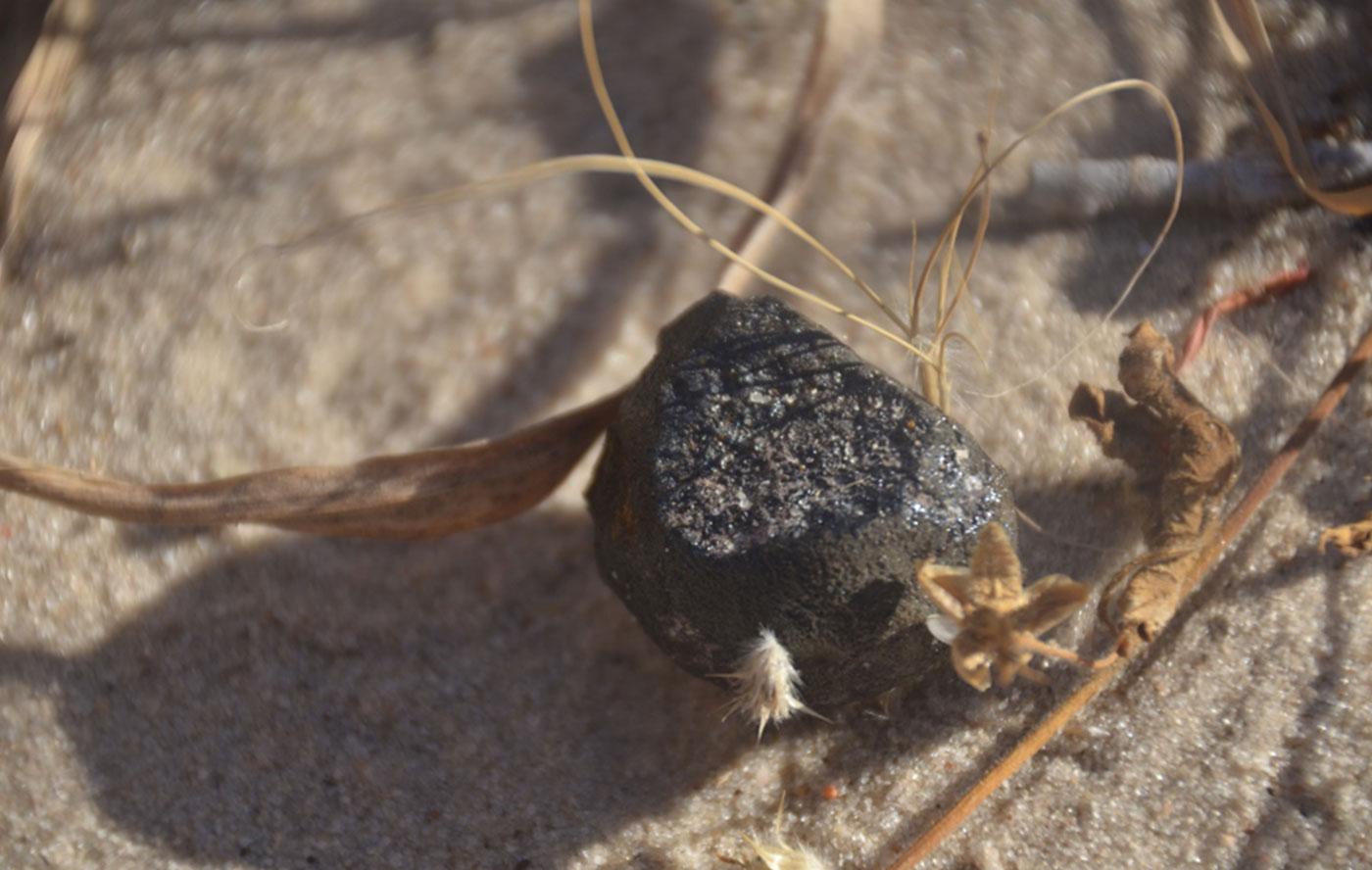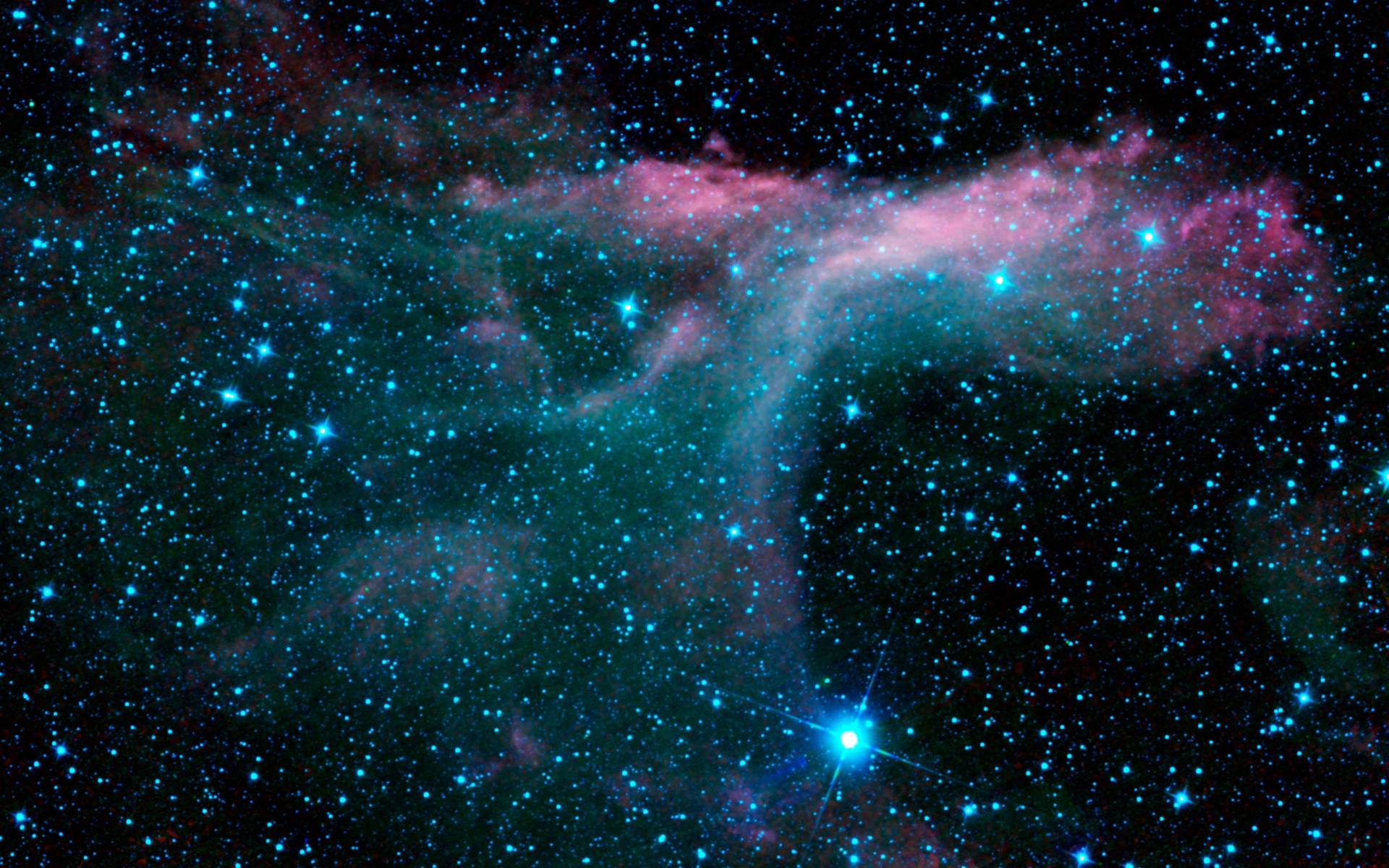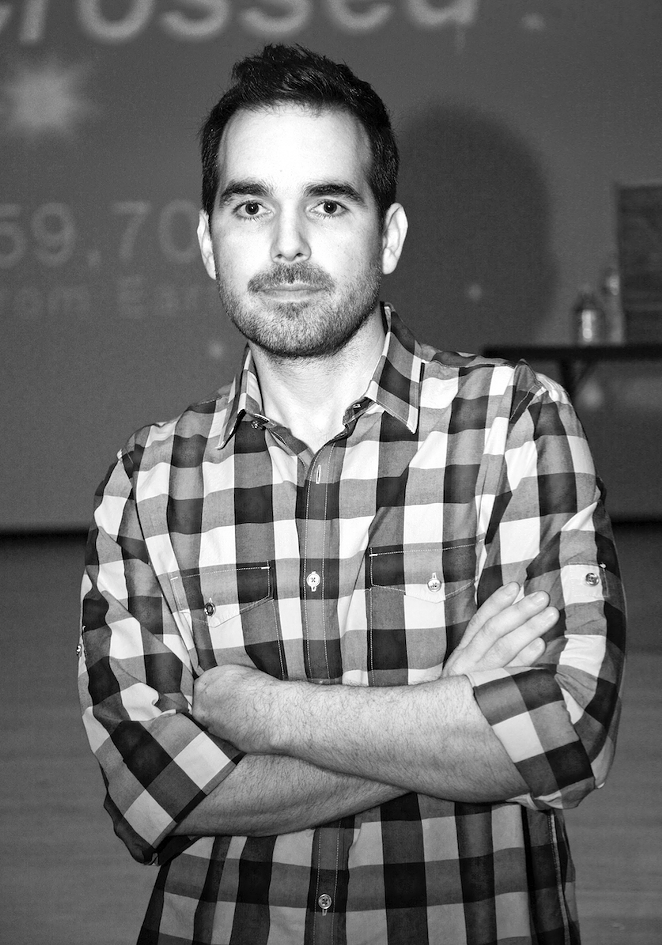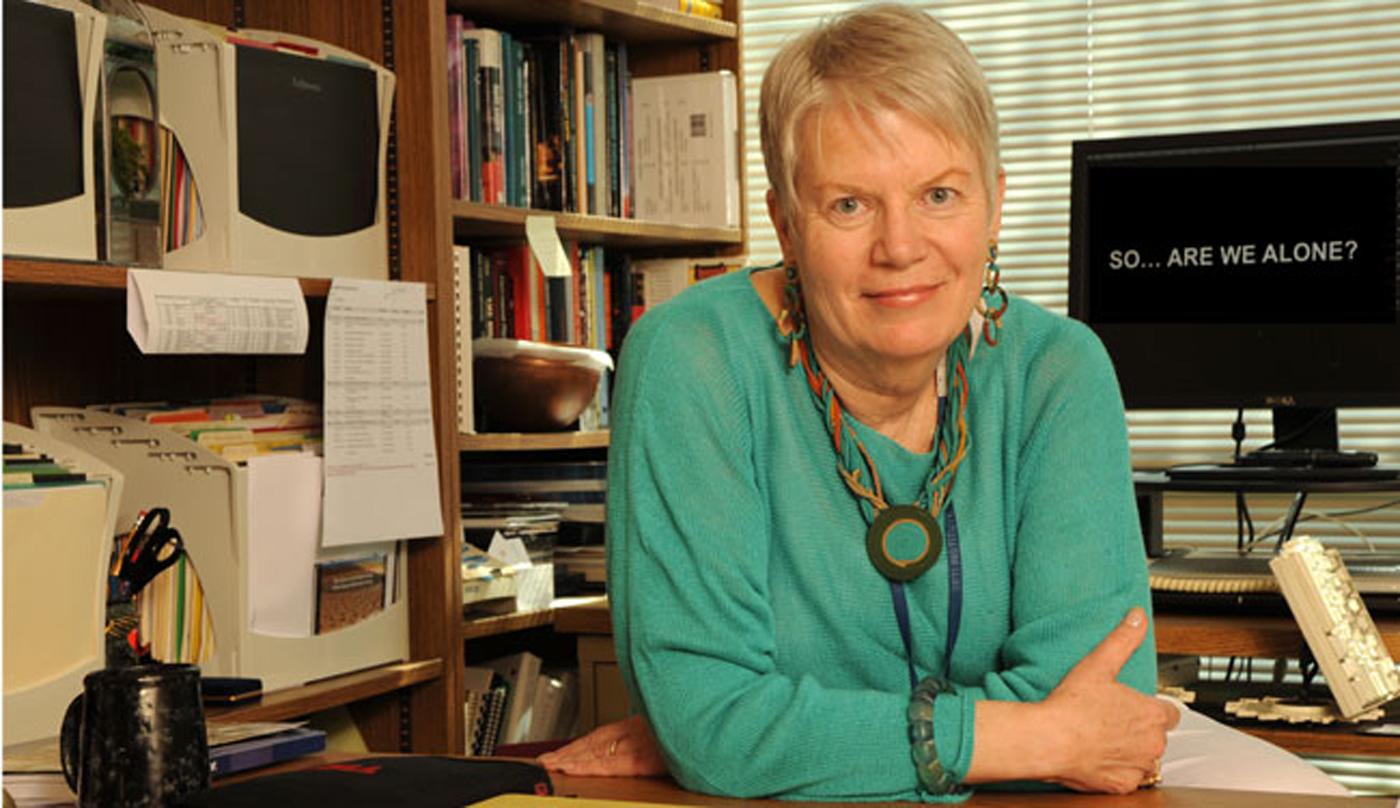
On June 2, 2018, the University of Arizona's Catalina Sky Survey detected a small asteroid, too small to pose a threat to Earth as it was expected to disintegrate in the atmosphere. But it did make a fiery entry into the skies over Botswana, flashing brilliantly in a fireball witnessed by sky watchers and security cameras. In the following days a team of experts that included SETI Institute senior research scientist Peter Jenniskens calculated the landing area to an area narrow enough to search on foot, as reported in Popular Mechanics:
These sightings granted scientists the chance to find the fragments of the asteroid on Earth. Peter Jenniskens, a meteorite expert with the SETI Institute in California, flew to Botswana to get involved in the hunt. He did one of three assessments to determine where the fragments could be.
Jenniskens and his staff at the University of Botswana and the Astronomical Society of Southern Africa collected security surveillance videos to determine the trajectory of the fireball. The clues all pointed to the same place: the remains must be scattered amid the Central Kalahari Game Reserve.
Days of combing the wilderness of the game reserve, with park rangers present to provide protection to the team of geoscientist and volunteers, proved fruitful - for only the second time in history, a small asteroid observed from space was located after impact. The first time occurred in 2008, and Jenniskens helped lead that team to its recovery in the Nubian Desert of Sudan.
You can read more about Peter Jenniskens on our website, SETI.org.
- Space.com: Pieces of 'Fireball' Meteor Found in Botswana
- Discover Magazine: In a Rare Feat, Scientists Anticipate and Recover an Incoming Asteroid
- Fox News: Asteroid discovery: Rare space rock fragment found
- MSN: Scientists find chunk of surprise asteroid that hit Earth
- Gizmodo: Meteorite Hunters Find Remains of Last Month's Botswana Fireball
- Popular Mechanics: For Just 2nd Time Ever, Meteor Hunters Recover Chunks of Rock They Tracked From Space
- Inquisitr: ‘Fresh’ Asteroid Fragment Uncovered In Botswana Less Than A Month After It Fell From The Sky
- Astro Watch: Fragment of Impacting Asteroid Recovered in Botswana
- Tech Times: Remnant Of ‘Fireball’ Meteor Recovered In Botswana
- Inverse: Remnant of Blinding Fireball That Exploded Over Africa Recovered in Desert
- EarthSky: Fragments of asteroid 2018 LA found in Botswana
- Africa Times: Scientists in Botswana find rare fragments from asteroid impact
- SETI.org: Scientist Interview - Peter Jenniskens
- NASA.gov: NASA Team Finds Riches in Meteorite Treasure Hunt
 Imagining Contact: Xenolinguistics and Speculative Language
Imagining Contact: Xenolinguistics and Speculative LanguageDIAPHANES Magazine published a collective interview on the topic of xenolinguistics: a branch of linguistics devoted to envisioning the language of extraterrestrial beings. Astrobiologist, geochemist, and SETI Institute Research Scientist Rosalba Bonaccorsi was among the experts interviewed by DIAPHANES, and shared her speculations on the challenges of communication between our species and one from another world:
If we consider alien minds that have evolved on alien planets, we have now an unfathomable, yet theoretical range of possibilities: from alien life, intelligence, and minds as we (might) know them e.g., non-human animals, to life, intelligence, and minds as we do not know them.
Bonaccorsi and others also discussed the merits of broadcasting messages into space, interspecies communication with intelligent life on Earth (such as cephalopods), and how science fiction helps scientists and the public imagine new possibilities.
- Diaphanes: From xenolinguistics to cephalopods
 Mapping New Worlds: NASA to Release Terrain Features of Pluto and Charon
Mapping New Worlds: NASA to Release Terrain Features of Pluto and CharonTopographic maps of Pluto and its largest moon, Charon, are being published in the journal Icarus by the New Horizons team. New Horizons is the interplanetary space probe launched in 2006 with the aim of flying by Pluto before continuing on to study objects in the Kuiper belt beyond. As data comes back from the probe, have revealed rich details such as high mountain peaks, ice sheets of frozen nitrogen, and deep fractured troughs. Charon too features deeply fractured terrain, as SETI Institute research scientist Ross Beyer remarked in a Phys.org article:
"These and other features make Charon the most rugged mid-sized icy satellites other than Saturn's high-contrast moon Iapetus," says Ross Beyer, Research Scientist at the SETI Institute in California with additional help from the United States Geological Survey (USGS), who assisted in the mapping efforts and is a co-author on the two Icarus articles.
The maps will soon be publicly available in the archives of the Planetary Data System.
New Horizons’ next target will be a Kuiper Belt Object called MU69 and nicknamed Ultima Thule. The flyby is expected to take place on New Year’s Day, 2019.
- Geek.com: First Global Maps of Pluto, Charon Available to All
- Phys.org: First global maps of Pluto and Charon from NASA's New Horizons mission published
 Communicating Ourselves: The Art of SETI Artist-in-Residence, Dario Robleto
Communicating Ourselves: The Art of SETI Artist-in-Residence, Dario RobletoThe San Antonio Current recently interviewed local native Dario Robleto, an artist-in-residence at the SETI Institute, about his art and longtime interest in SETI:
I have a lifelong fascination with the topic and the SETI Institute. So, to be asked to actually get to work with those scientists was just like a dream come true ... I’m over two years in as a resident, but decades of thinking about the problem… Because I argue that it is the most profound question we can ask: Are we alone? Either way you answer it, it’s amazing. Either we are the only intelligent life — which, think about that — or we’re not — which, think about that.
Robleto also spoke about how his art is informed by the science of SETI, and in turn bridges the presumed divide between science and art:
In all of my work, I’m always making the case that there’s a value for artists to be involved… At its core, all of those works are talking about the problem of how do you communicate with something that’s not you? A lot of my work with SETI is about this: How do you imagine something you can’t imagine? And then how do you communicate with it? Is there such a thing as universal communication? We have problems on our own planet just communicating human-to-human, let alone [with] something you can’t imagine.
You can learn more about the SETI AIR (artists-in-residence) program on our website, SETI.org.
- San Antonio Current: The Alchemist: The McNay Opens a Window into the Fascinating Work of San Antonio Native Dario Robleto
- SETI.org: SETI AIR: The SETI Institute’s Artists in Residence Program
 Searching for Life with Dr. Jan Cami
Searching for Life with Dr. Jan CamiFinding life in the universe is a challenge, not least because of the distances involved. Dr. Jan Cami of the University of Western Ontario and also an affiliate of the SETI Institute appeared on the Sound of Science podcast to discuss his work in molecular spectroscopy, which is one way researchers gather data on far-away stars. Dr. Cami spoke about how molecular spectroscopy is used to find amino acids, which form proteins that place a crucial role in biological processes. Listen to find out what this means for SETI research.
- Sound of Science: Episode 5: The search for life
- Radio Western: Sound of Science: Dr. Jan Cami
 Engineering the Future: Jill Tarter on the Progress of Women in STEM
Engineering the Future: Jill Tarter on the Progress of Women in STEMDr. Jill Tarter, pioneering SETI researcher, co-founder and Chair Emeritus for SETI at the SETI Institute, spoke to a computer engineering student at Cornell about the changing demographics in the university’s engineering program. Their chat was published in a recent edition of Cornell Engineering Magazine, which noted that the class of 2021 is the first in the college’s history to be composed of more women than men. By contrast, Tarter noted that she was the only female student in the program in the mid-1960’s and discussed some of the challenges she faced.
Tarter has been recognized for both her groundbreaking work in astrobiology and for her advocacy of women in science, including a Lifetime Achievement Award by Women in Aerospace and a TED Prize. You can learn more about her remarkable career in the book Making Contact: Jill Tarter and the Search for Extraterrestrial Intelligence, a biography by Sarah Scoles, and our website, SETI.org.
- Cornell Engineering Magazine: Women Engineers, Separated by 53 Years, Discuss Cornell Experiences
- SETI.org: The Biography of SETI Pioneer Jill Tarter, Making Contact: Jill Tarter and the Search for Extraterrestrial Intelligence, is Released
- SETI.org: Scientist Interview - Jill Tarter - Beating the Odds
Big Picture Science
In last week’s episode, we learn how to recycle nearly everything in an encore of What Goes Around. Our previous week’s episode explored some the strange experiments that formed humanity’s attempts to understand the nature of life in an encore presentation of Frogs’ Pants.
On our most recent episode of Facebook Live, SETI Institute Trustee Jonathan Knowles was joined by scientists Jon Jenkins and Doug Caldwell to talk about NASA's TESS mission and exoplanet detection. Videos of all past Facebook Live events can be found on our Facebook page: https://www.facebook.com/SETIInstitute/
- COSPAR 2018: July 14-22, Pasadena, CA Numerous SETI Institute researchers will be offering talks including Rosalba Bonaccorsi, Michael Busch, Seth Shostak, David Summers, Jeonghee Rho and John Rummel
- SETI Talks: July 19, Menlo Park, CA VR/AR in Space: The Next Revolution? Timoni West of Unity Labs, Amaresh Kollipara who serves on the SETI Institute Board of Trustees, and SETI Institute scientists Franck Marchis and J.R. Skok will present
- Another Pale Blue Dot: The SETI Institute’s Search for Exoplanets: July 20, Livermore, CA Franck Marchis to present
- SETI – The Promise & Peril of the Ultimate Question: July 29, Berkeley, CA Jill Tarter to present
- In Saturn’s Rings: August 5, Seattle, WA A new film exploring Saturn’s rings is being shown at the Museum of Flight. Nathalie Cabrol, Senior Research Scientist and Director of the Carl Sagan Center is an executive producer of the film.
- Novato Space Festival: August 5, Novato, CA Jill Tarter book signing
- WorldCon 76: August 16-20, San Jose, CA Franck Marchis to participate in a panel discussion
- International Astronomical Union: August 20-31, Vienna, Austria Franck Marchis, SETI Institute Senior Scientist will speak about adaptive optics and the Unistellar eVscope





